Student Arm Length Sizing Guide
Your teacher should tell you the size instrument you will need. If not, you can use our sizing guide below. Arm length is measured from the neck to the middle of the palm of the left arm.
Instrument Size needed
| Arm Length (in inches) |
VIOLIN | VIOLA | Rental Price (NO maintenance) |
Rental Outfit Value |
|---|---|---|---|---|
| 14” | 1/16 size violin | 12.82 | 295.00 – 395.00 | |
| 15″ | 1/10 size violin | 12.82 | 295.00 – 395.00 | |
| 16″ | 1/8 size violin | 12.82 | 295.00 – 395.00 | |
| 18″ | 1/4 size violin | 12.82 | 450.00 – 650.00 | |
| 20″ | 1/2 size violin | 14.67 | 450.00 – 650.00 | |
| 22″ | 3/4 size violin | 14.67 | 450.00 – 650.00 | |
| 24″ | 4/4 size violin | 14.67 | 450.00 – 650.00 | |
| 24.5” | 15” viola | 15.98 | 500.00 – 600.00 | |
| 25.5” | 15 ½” viola | 15.98 | 500.00 – 600.00 | |
| 26.5” | 16” viola | 15.98 | 500.00 – 600.00 |
 How to measure for a violin
How to measure for a violin
To select the correct size violin, measure the player’s arm length using a retractable tape measure (or a yard stick). Measure the length between the player’s neck and middle of their left-hand palm when the hand is fully extended and raised perpendicular to the body (not reaching, but not bent). If there is any doubt, or if your child is in between sizes, choose the smaller size violin.
 How to measure for a viola
How to measure for a viola
To select the correct size viola, measure the player’s arm length using a retractable tape measure (or a yard stick). Measure the length between the player’s neck and the middle of their left-hand palm when the hand is fully extended and raised perpendicular to their body (not reaching, but not bent). Refer to the chart. If there is any doubt , or if your child is in between sizes, choose the smaller size viola. An instrument too large is hard to hold up, feels heavy and is harder to play than an instrument the correct size.
 How to measure for a cello
How to measure for a cello
The best way to determine the correct sizing is to measure using a cello. Without a cello, however, you can achieve a very close approximation based on the height of the player. Refer to the chart. If there is any doubt , or if your child is in between sizes, choose the smaller size cello. An instrument too large is hard to hold up, feels heavy and is harder to play than an instrument the correct size.
 How to measure for a bass
How to measure for a bass
The best way to determine the correct sizing is to measure using a bass. Without a bass, however, you can achieve a close approximation based on the height of the player. Refer to the chart. If there is any doubt, or if your child is in between sizes, choose the smaller size bass. An instrument too large is harder to play than an instrument of the correct size.
